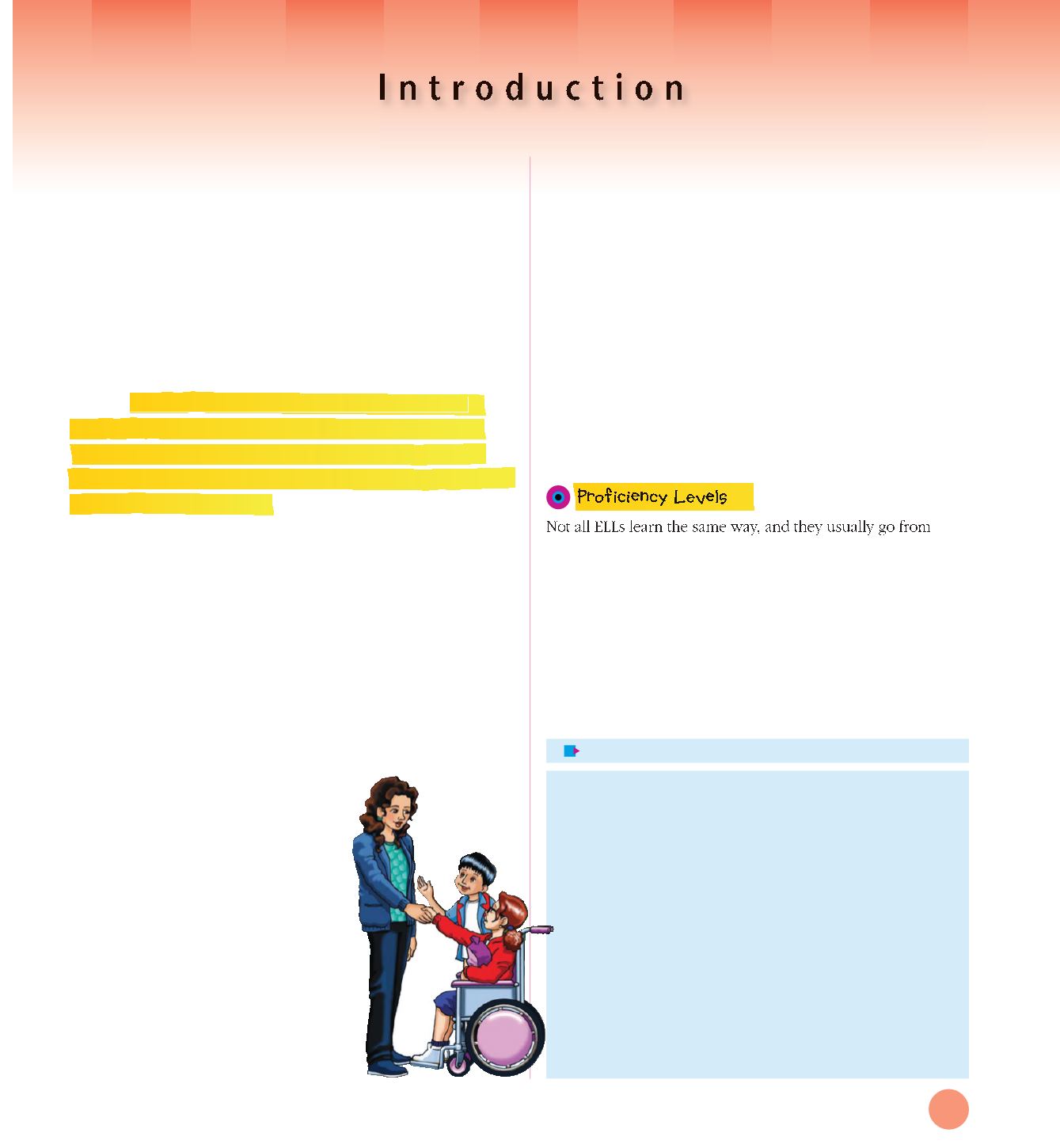

ix
Santillana Spotlight on English
is a comprehensive, standards-
based program for English language learners (ELLs) designed
p 5
g
p g
g g
to hel K– students ain and develo En lish lan ua e
proficiency, access grade-level content, and successfully
transition to the mainstream classroom.
Santillana Spotlight on English
provides educators with the
tools necessary to empower ELLs to acquire the English
language accurately and achieve competency in the four
language arts domains of listening, speaking, reading, and
writing. Ma
eeded to learn the content. In addition, many of these
students stabilize at the intermediate level of their language
development, and they remain there indefinitely.
Santillana
Spotlight on English’s
carefully structured lessons address this
problem by allowing teachers to expose their students to
grade-level Academic English and models of Standard English,
thereby giving students the necessary self-confidence and
knowledge to move out of the intermediate level, achieve
proficiency in academic English, and enter the mainstream
classroom.
Santillana Spotlight on English
is a
balanced program that not only
provides the academic language
students need, it also brings together
all of the current methodologies that
have proven successful with other
Santillana programs, such as
Bridge
to Communication
and
Santillana
Intensive English
. Additionally, the
program features innovative teaching
strategies that will enable teachers to
provide direct language instruction,
meaningful and structured cooperative
one proficiency level to another fairly rapidly. All educators
will probably teach, at one time or another, ELLs who are at
one of these three general levels: Beginning, Intermediate,
and Advanced. In every
Santillana Spotlight on English
lesson,
teachers will find strategies and activities that target these
levels.
Some of the teaching strategies included in all grade levels are:
learning activities, supportive and instructional feedback,
differentiated instruction, and opportunities for students to
p
g
g
ractice usin Academic En lish.
References
Dutro, Susana, and Carrol Moran (2002). Rethinking English Language
Instruction.
English Learners: Reaching the Highest Level of English
Literacy.
Newark, DE: International Reading Association.
Kinsella, Kate (2006).
Strategies to Bolster Academic English Language
Use and Lesson Engagement.
Fresno, CA: CATESOL Conference.
Marzano, Robert (2003).
What Works in Schools: Translating Research
into Action.
Alexandria, VA: Association for Supervision and Curriculum
Development.
Scarcella, Robin (2003).
Academic English: A Conceptual Framework.
Santa Barbara, CA: University of California Linguistic Minority Research
Institute.
Listening and Speaking:
■
rhymes, chants, songs, games, pantomime and dramatization
including gestures, body movements, and facial expressions
■
questions that can be answered with one- or two-word
responses
■
opportunities to use and apply academic vocabulary
Reading:
■
print-rich environment
■
techniques to help read and understand key words and
directions written in the text or on the board
■
visual aids, realia, and manipulatives
Writing:
■
techniques to help copy the letters of the alphabet, write
phrases and simple sentences, and copy words posted around
the classroom
Beginning
ny ELLs develop informal language skills and
are able to communicate in English, but they are not able
to do well in content-area classes because they have not
mastered or are unfamiliar with the vocabulary and structures
n


















